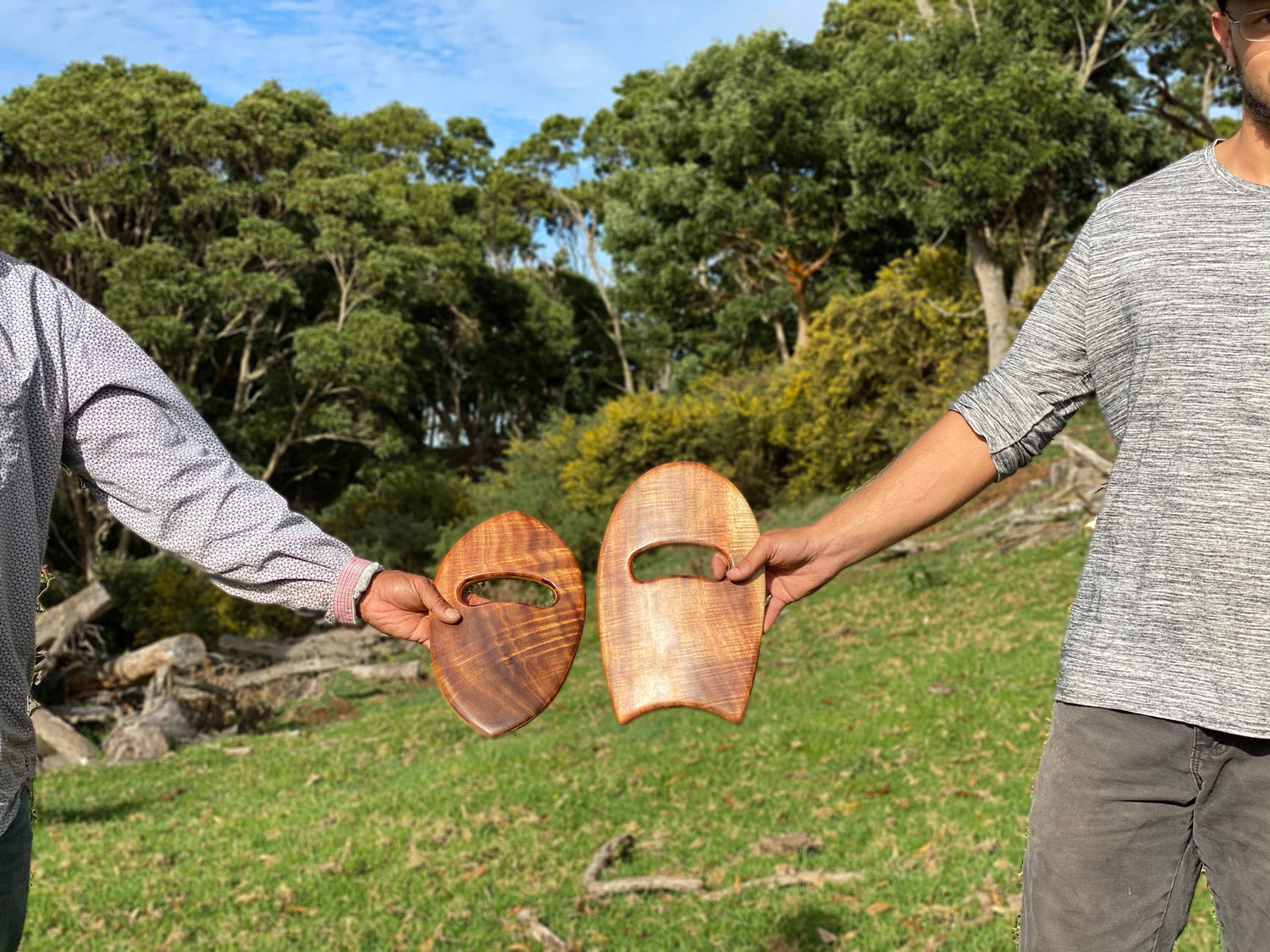Resting on the stumps of the grove where their outer layers were harvested, these bodysurf handplanes are a small tribute to the hard work public and private operations are taking to reforest this endemic Hawai'i tree.
With varying and controversial interests, there is a common goal of creating sustainable harvesting practices that also replenish decades of consumption. Contemporary research to define sustainable practices for koa is decades in the making, and will continue to be a significant undertaking. It takes each koa decades to mature, and seedlings are fragile. Currently? There are about 217,000 acres, and its population is actually not considered to be in danger.
However, in a piece by Blaze Lovell released at the end of 2020, he notes that an estimated 90% of original forest growth has been lost to harvesting, clearing, or grazing. There is great demand from the acoustic instrument market, and a hefty percentage of our islands' koa is shipped to the mainland. According to Hawai'i Business article "Making Koa Sustainable", top selling koa goes for as much as $150/board foot -- which means each segment of 12" x 12" x 1"! There is a LOT to unpack on this topic. Many are doing what they can to utilize other locally grown, rescued, and salvaged species - some invasive.
Koa is a foundational part of our Hawai'i native forests and watersheds. Community voices point to a need for a multi-pronged approach to achieve greater reforestation and sustainable harvesting programs. In our work, we rarely utilize koa. When we have, it has always been brought to us with a story of its journey. That makes it all the more special.
...
Study the Trees is a series where we delve into the wood species used in making furniture and other woodwork across the globe. For more of our everyday updates, follow our Instagram @hellojohi, Facebook @JohiDesign, or Pinterest @JOHIhome. Mahalo for supporting our small business!

